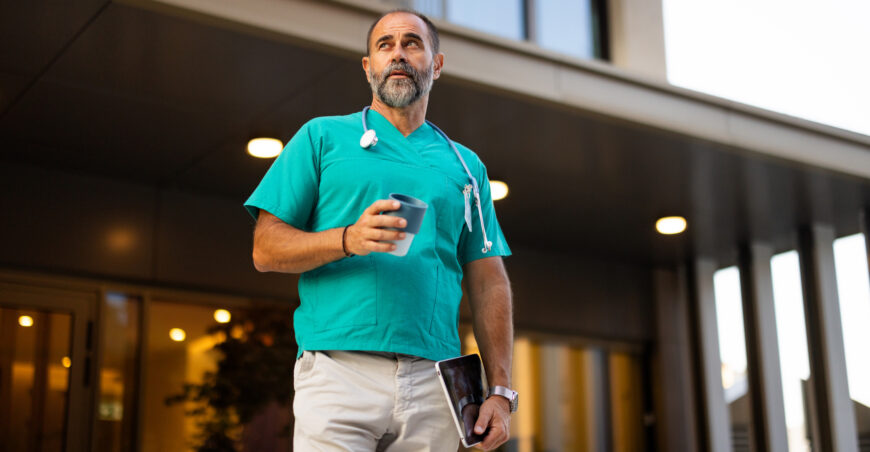As a physician, your practice isn’t just your job, it’s one of your most valuable assets. Owning the building where you treat patients gives you more than just a place to work – it gives you control, long-term stability, and a chance to build real wealth. In this article, we’ll break down practical, real-world strategies for physicians who are thinking about owning their own space and how the ICRE Investment Team can help make that a smart move for your future.
1. Why Physicians Should Consider Owner‑User Investment
Control and Stability
Owning your practice space provides predictability over rent, lease terms, and location. Instead of worrying about rent hikes or lease expirations, physicians can plan long-term stability for their practice.
Financial Upside
Owner‑user investments provide both practice utility and asset appreciation. You benefit from rental income or equity growth, as tenants pay down your mortgage for you via rent overtime.
Tax Benefits
Ownership grants you access to depreciation, mortgage interest deductions, and potential pass-through benefits – enhancing after-tax returns
2. Five Common Physician Owner‑User Strategies
a) Sale-Leaseback
Physician-owners can sell their practice building to an investor (often a medical real estate specialist) and lease it back as a long-term tenant. This frees up capital while preserving practice continuity, particularly useful when some physicians want liquidity and others want to remain involved.
b) Co-Ownership with Investment Partners
When forming or expanding practices, physicians may co-invest in buildings alongside developers or institutional partners. The physician group gains ownership stake while benefiting from professional real estate management.
c) New Build Owner-User Development
Joining or spearheading development of customized medical office buildings allows physicians to configure space optimally, future‑proofing layout and spec for specific medical workflows.
d) Traditional Direct Purchase
For physicians starting a new practice or expanding, direct purchase of medical office space gives immediate control over Build-out, location, and tenant mix. If part is leased to complementary practices (e.g. therapy, imaging), it can support cash flow.
e) Indirect Passive Investment
Some physicians prefer passive investment in medical office buildings via syndications or private REITs. While not owner-users personally, these provide exposure to medical real estate and steady income with minimal management demands.
3. Physician Real Estate Ownership: The Ups and Downs
The Upsides:
Your Space, Your Investment
Owning your building means you’re not just paying rent, you’re building equity in an asset that supports your practice.
Tax Perks & Financial Tools
Ownership opens the door to strategies like depreciation, 1031 exchanges, and even sale-leasebacks to unlock capital when needed.
Extra Income Potential
If you have more space than you need, leasing it to other providers or complementary services can create additional cash flow.
The Trade-Offs:
More Hats to Wear
With ownership comes added responsibility – property maintenance, managing tenants, and dealing with leasing logistics.
It’s Capital Heavy
Whether it’s a down payment, renovation costs, or financing, the upfront investment can be significant.
Not Always One Vision
If you’re in a group practice, partners might have different opinions about when to buy, sell, or reinvest.
4. Practical Steps for Physicians Considering Owner‑User Real Estate
Define Your Why – Do you want to build equity? Control practice location? Reduce overhead uncertainty?
Conduct Market & Demographic Research – Identify areas with patient demand, access, future growth, and limited physician competition.
Engage Healthcare Real Estate Specialists – Brokers like ICRE Investment Team offer hyperlocal expertise in tenant migration, absorption rates, and off‑market opportunities tailored to medical uses.
Structure Transactions Thoughtfully – Evaluate sale‑leaseback, joint-venture ownership, or phased investment aligned to practice goals.
Plan for Patient Experience & Growth – Design floor plans, visibility, access, and zoning compliance to support patient retention and referrals.
Aligning Real Estate & Practice Success with ICRE
At ICRE, we understand physician owner‑users like you. Whether you’re launching a practice, expanding, or considering monetizing your real estate, our expertise lies in pairing practice needs with an optimal real estate strategy.
From co-investment structures and owner-user development to sale-leasebacks and off-market opportunities, ICRE Investment Team helps navigate the full spectrum of physician-aligned real estate strategies.
How ICRE Investment Can Support Your Physician Strategy
If you’re a physician considering stepping into owner‑user real estate, here’s how ICRE Investment Team can help:
Tailored Real Estate Solutions
Customized strategies, be it sale-leaseback, joint ownership, or new build—that match your practice and financial goals.
Medical Market Intelligence
In today’s tight medical office market, our brokers deliver real-time data and off-market access to elevate your strategy before opportunities become competitive.
Full Deal Structuring Support
From aligning internal physician ownership objectives to underwriting, modeling, zoning, and financing guidance – ICRE provides end-to-end support.
If your goal is long-term practice control, equity growth, or a flexible plan for your team’s future, owner-user real estate can serve dual roles – practical workspace and wealth-building asset. And when you’re ready to act, ICRE Investment Team is ready to walk alongside your physician group at every step.
















